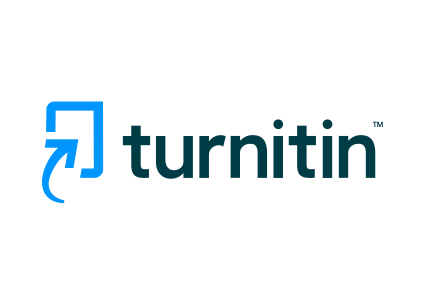VIRTUAL REALITY TRENDS IN EDUCATIONAL SIMULATION: PERSPECTIVES, CHALLENGES, AND CURRENT PRACTICES
Keywords:
virtual reality, educational simulation, perspectives, challenges, current practicesAbstract
Virtual Reality (VR) provides an immersive and interactive experience, allowing students to engage more deeply in the learning process. This experience can improve understanding and retention of information because students can feel and interact directly with learning material. VR technology enables personalized learning according to each student's needs and learning pace. This helps accommodate a variety of learning styles and abilities, providing a more inclusive experience. Virtual Reality has great potential to revolutionize education through immersive and interactive simulations. However, challenges such as cost, availability of quality content, and health concerns need to be overcome for this technology to be adopted more widely and effectively. Current practice shows that with the right approach, Students in a range of academic areas can benefit from creative and relevant learning experiences that virtual reality can offer. Virtual reality (VR) has demonstrated significant promise in enhancing student comprehension and learning. VR can be a useful tool for developing creative and interesting learning experiences for students if current techniques are put into practice and present problems are overcome.
References
Aczel, P. (2017). Virtual reality and education-world of teachcraft?. Perspectives of Innovations, Economics and Business, 17(1), 6-23.
Alshammari, S. H. (2019). The role of virtual reality in enhancing students’ learning. International Journal of Educational Technology and Learning, 7(1), 1-6.
Chavez, B., & Bayona, S. (2018). Virtual reality in the learning process. In Trends and Advances in Information Systems and Technologies: Volume 2 6 (pp. 1345-1356). Springer International Publishing.
Cook, M., Lischer-Katz, Z., Hall, N., Hardesty, J., Johnson, J., McDonald, R., & Carlisle, T. (2019). Challenges and strategies for educational virtual reality: Results of an expert-led forum on 3D/VR technologies across academic institutions. Information Technology and Libraries, 38(4), 25-48.
Dai, C. P., Ke, F., Dai, Z., & Pachman, M. (2023). Improving teaching practices via virtual reality‐supported simulation‐based learning: Scenario design and the duration of implementation. British Journal of Educational Technology, 54(4), 836-856.
Daniela, L. (2020). New perspectives on virtual and augmented reality. In New Perspectives on Virtual and Augmented Reality. Routledge.
Hu-Au, E., & Lee, J. J. (2017). Virtual reality in education: a tool for learning in the experience age. International Journal of Innovation in Education, 4(4), 215-226.
Kavanagh, S., Luxton-Reilly, A., Wuensche, B., & Plimmer, B. (2017). A systematic review of virtual reality in education. Themes in science and technology education, 10(2), 85-119.
Ke, F., & Xu, X. (2020). Virtual reality simulation‐based learning of teaching with alternative perspectives taking. British Journal of Educational Technology, 51(6), 2544-2557.
Keskitalo, T. (2011). Teachers’ conceptions and their approaches to teaching in virtual reality and simulation‐based learning environments. Teachers and Teaching: theory and practice, 17(1), 131-147.
Lege, R., & Bonner, E. (2020). Virtual reality in education: The promise, progress, and challenge. Jalt Call Journal, 16(3), 167-180.
Liu, D., Bhagat, K. K., Gao, Y., Chang, T. W., & Huang, R. (2017). The potentials and trends of virtual reality in education: A bibliometric analysis on top research studies in the last two decades. Virtual, augmented, and mixed realities in education, 105-130.
Maghool, S. A. H., Moeini, S. H. I., & Arefazar, Y. (2018). An educational application based on virtual reality technology for learning architectural details: challenges and benefits. Archnet-IJAR: International Journal of Architectural Research, 12(3), 246.
Marks, B., & Thomas, J. (2022). Adoption of virtual reality technology in higher education: An evaluation of five teaching semesters in a purpose-designed laboratory. Education and information technologies, 27(1), 1287-1305.
Marougkas, A., Troussas, C., Krouska, A., & Sgouropoulou, C. (2023). Virtual reality in education: a review of learning theories, approaches and methodologies for the last decade. Electronics, 12(13), 2832.
Martín-Gutiérrez, J., Mora, C. E., Añorbe-Díaz, B., & González-Marrero, A. (2017). Virtual technologies trends in education. Eurasia journal of mathematics, science and technology education, 13(2), 469-486.
Qiao, J., Xu, J., Li, L., & Ouyang, Y. Q. (2021). The integration of immersive virtual reality simulation in interprofessional education: A scoping review. Nurse Education Today, 98, 104773.
Rashid, S., Khattak, A., Ashiq, M., Ur Rehman, S., & Rashid Rasool, M. (2021). Educational landscape of virtual reality in higher education: Bibliometric evidences of publishing patterns and emerging trends. Publications, 9(2), 17.
Real, F. J., DeBlasio, D., Ollberding, N. J., Davis, D., Cruse, B., Mclinden, D., & Klein, M. D. (2017). Resident perspectives on communication training that utilizes immersive virtual reality. Education for Health, 30(3), 228-231.
Rojas-Sánchez, M. A., Palos-Sánchez, P. R., & Folgado-Fernández, J. A. (2023). Systematic literature review and bibliometric analysis on virtual reality and education. Education and Information Technologies, 28(1), 155-192.
Salvetti, F., & Bertagni, B. (2019). Virtual worlds and augmented reality: The enhanced reality lab as a best practice for advanced simulation and immersive learning. Form@ re-Open Journal per la formazione in rete, 19(1), 242-255.
Wei, Z., & Yuan, M. (2023). Research on the current situation and future development trend of immersive virtual reality in the field of education. Sustainability, 15(9), 7531.
Downloads
Published
Issue
Section
License
Copyright (c) 2024 L.Virginayoga Hignasari

This work is licensed under a Creative Commons Attribution-NonCommercial-ShareAlike 4.0 International License.










